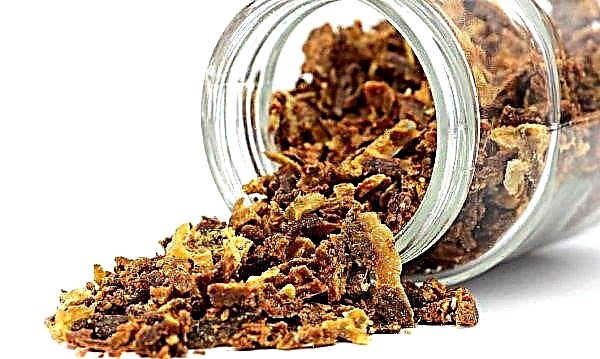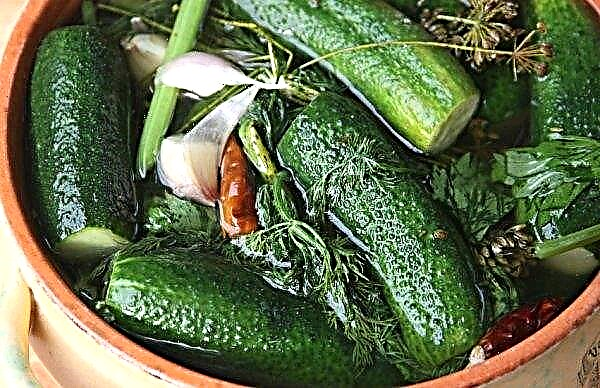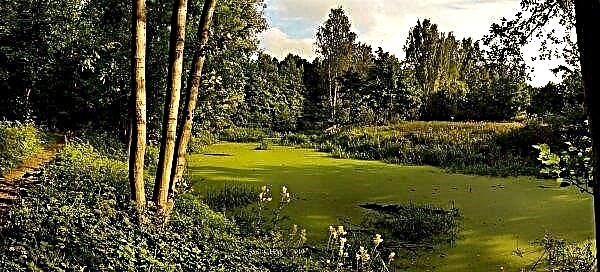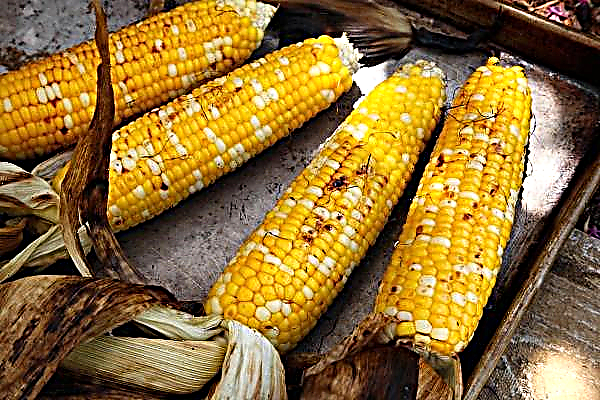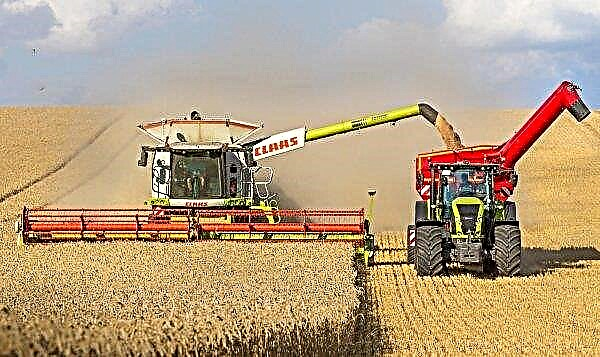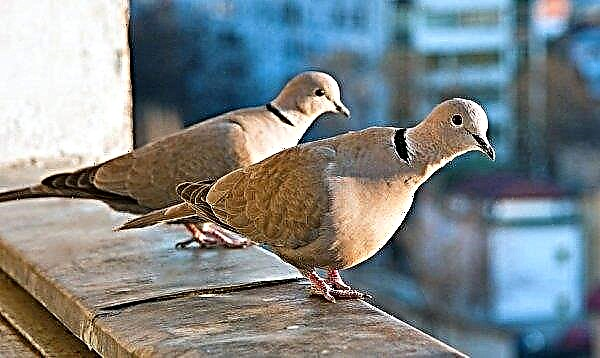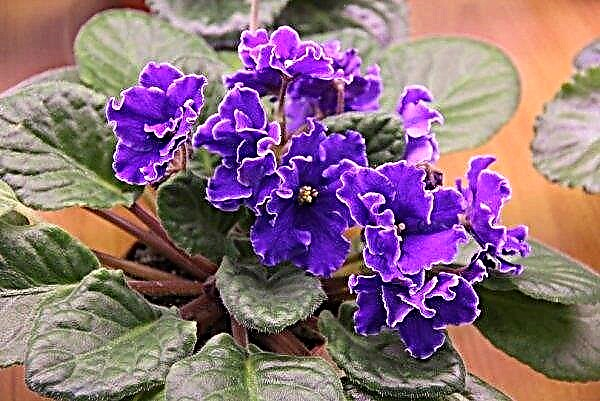Breeders are breeding new varieties of tomatoes, and among them there are a lot of unusual fruit shapes: in the shape of a flower, hearts, oblong. The Zhigalo tomato variety got its name for its similarity in form to the male genital organ, as well as its high yield.
Grade description
According to its characteristics, this variety is significantly different from others:
- there is little pulp inside;
- red color is not bright, slightly muffled;
- sweet fruits with a slight acidity;
- up to 7 fruits are located on one brush;
- tomato weight about 100 g;
- bush height up to 45 cm.
Did you know? The largest tomato in the world was grown in America, and it weighed 3 kg 800 grams.
Advantages and disadvantages
- Grade Zhigalo has the following advantages:
- a large number of ovaries;
- compactness and short stature;
- simplicity in leaving;
- low water content, which is good for making tomato paste and sauces.
- Disadvantages:
- thick peel;
- susceptible to disease;
- the shape and length are not suitable for laying in a jar as a whole.
Video: Gigalo Tomato
Sowing seeds for seedlings
To get the Zhigalo variety, it is better to grow seedlings yourself from seeds, since it is not so easy to find a ready-made one.
The timing
From the moment of sowing the seeds until they are planted in the soil, 2 months pass. Therefore, if you plan to plant in May, then you need to sow in mid-March. At this time, daylight hours increase, and plants will receive light and heat as much as they need.
Did you know? Vitamin C in tomato is found most in the jelly-like liquid that surrounds the seeds.
The soil
For seedlings of tomatoes need a light and loose soil. The best option is to buy the finished mixture, with a specially developed composition, but you can cook it yourself. To do this, mix garden soil, sand and peat. Well suited land moles. In a large basin mix 2 parts of chernozem, one part of sand and peat. The day before sowing, the soil mixture is disinfected by pouring it with boiling water.
Capacity for growing
Purchased boxes for seedlings will last more than one year. You can take advantage of what is in the house: disposable plastic or paper cups, plastic bottles collected in advance and washed boxes of milk or juice. Another option is peat tablets. You only need to wet the tablet and put the seeds in the swollen soil. Sowing containers with cells and a lid are also sold in stores.
Seed preparation
The process of preparing seed consists of three stages:
- rejection of empty seeds;
- disinfection;
- hardening.
Sowing seeds
Land for planting moisten. Prepared seeds are laid out on the surface of the soil, picking up with a toothpick. The inoculum is covered with 2 mm soil, covered with glass or film to retain moisture and temperature. The laying of seeds from each other is carried out at a distance of 3-4 cm.

Seedling Care
After 5-6 days, the first sprouts sprout. Shelter is gradually removed when the seedlings reach 1–2 cm in height. The first day is opened for an hour or two, then - for the whole day, and, finally, removed. A suitable place for growing seedlings is the east or southeast side. Care should be taken in advance about shading from bright light so that thin shoots do not burn. Air temperature should not be lower than +23 ... + 24 ° С. Water the plants from a syringe or a tablespoon. The earth should not dry out, but should not be too wet. For uniform growth, it is periodically turned in different directions to the light.
Feeding seedlings is possible, but not necessary. Do this 10 days after diving with special fertilizers specifically for seedlings. Top dressing should be no more than three.
Hardening
Hardening seedlings begin 2 weeks after germination. To do this, they take it out onto the balcony at +15 ° С and keep it for half an hour, then repeat the same thing at +10 ° С. But it’s easier to do this 14 days before the intended landing in the open ground. They take out plants in the evenings on the street or balcony, leave them there for an hour.
A week later, they take out in the morning and leave it in the shade for the whole day. It is necessary to accustom you to direct rays in stages: leave it in partial shade for 30 minutes, and every day the duration of solar procedures is increased.
Planting seedlings in a permanent place
Seedlings are planted in open ground when it grows to 20 cm. Moreover, the root system is already developed, and plants are more likely to survive. Departure dates depend on the region, but not earlier than mid-May. In the greenhouse, you can plant in the early days.
When planting bushes, you need to leave at least 50 cm between them. This will allow you to freely care for grown plants. In case of late blight, diseased tomatoes should not touch healthy ones.
Growing Features
The plant requires care: watering, feeding, pinching, tying and preventive treatment from diseases and pests. Read more about this below.
Watering
For irrigation, water is pre-poured into barrels or any large containers, so that by the evening it warms up. Tomatoes do not like cold water. Watering is carried out only under the root at the rate of 1 liter per bush.
The first two weeks after planting are watered every evening so that the plants begin. When they get stronger, and the root system goes deeper, you can water 3 times a week. You can buy and adapt a ready-made drip system for irrigation.
Top dressing
On a well-fertilized soil, especially chernozem, the Zhigalo will grow without fertilizing. If the soil is light, sandy, then fertilizing will have to be done at least 3 times per season. The first - 2 weeks after planting, then another 3 weeks later and the last - when the fruits begin to tie.
Fertilizers are organic and inorganic. From natural fit infusion of mullein and yeast. Mullein is mixed with water in a ratio of 1:10, it is insisted for two days and watered 1 liter under a bush.
Important! Before applying dressing, water the tomatoes well. Through moist soil, beneficial substances will quickly reach the roots.
Stepson
The smaller the branches from the stem, the larger the fruits will be, therefore, Zhigalo stepsoning is carried out if necessary, if lateral processes appear. They are carefully trimmed, retreating from the stem 1-2 cm.
Soil care
Lada needs constant access of oxygen to the roots, which means that the soil must be loose. Weeding is carried out as the beds overgrow with weeds, and loosening under the bushes - once a week. Three times during the summer tomatoes are spudded.  If the summer is dry, then mulching, such as straw, saves the plants from burnout. Mulching retains moisture and also inhibits weed growth. However, when a large amount of rain falls, mulching only harms, since waterlogging is harmful to this plant.
If the summer is dry, then mulching, such as straw, saves the plants from burnout. Mulching retains moisture and also inhibits weed growth. However, when a large amount of rain falls, mulching only harms, since waterlogging is harmful to this plant.
Bush tying
Despite the fact that the bush is stunted, it needs a garter. The fruits of the variety are large, there are a lot of them and the bush, not withstanding the severity, falls to the ground. Also, plants break with strong gusts of wind. Therefore, it is better to tie each bush to a strong peg. You can make this design: on both sides of the row put iron or wooden supports on which they attach a wooden pole on the sides of the bushes. Plants are tied to this pole.
Important! The stem and leaves of tomatoes are poisonous, so you need to work with them in gloves, and wash your hands thoroughly, even after a light touch of greenery.
Preventative treatment
Plant diseases are better prevented than treated. The Zhigalo variety has unstable immunity, especially to late blight.
Since the autumn should take care of prevention, and you must start with the soil. To begin with, weeds are harvested and carried out of the site. The place of the future beds is dug up, adding ash, which will serve as fertilizer and antiseptic. Then, special pesticides are added, which, with the onset of cold weather, hide in the upper soil layer.
3 weeks before planting, the seedlings are treated with a 0.5% solution of Bordeaux liquid or copper sulphate. An additional protection will be the addition of a handful of onion husks and ash during planting in each well.
The Zhigalo variety is suitable for growing in a small area, since its bush is compact. It is not difficult to take care of it, and the tomato crop gives abundant, for which it is popular among gardeners.


